Introduction
Imagine… getting your products into Walmart.
Most indie brands will jump head in at the opportunity.
… but not Walls Need Love.
Instead, they used boring, and good old fashioned strategies like conferences to build brand awareness.
And they’ve been able to somehow combine all of these things to create a unique ‘organic to paid’ Pinterest strategy that generates 94% of their social traffic.
I’m going to break down this exact strategy step-by-step, so you can follow in their footsteps.
But first, let’s go over the other crucial decisions and strategies that had contributed to WNL’s growth success.
So… why say no to big box retailers?
Typically, you get one deal with Walmart and your business literally blows up over night.
One partnership like that and you go from zero to hundreds of thousands of units sold in no time.
And yet, despite that potential, Walls Need Love (WNL) purposefully avoids big-box retailers.
Crazy, right?!
But when you dig a little deeper, it makes perfect sense.
One major drawback is pinched margins. Working with these multinational conglomerates ain’t for the faint of heart.
You’ll have to adjust everything about your business to fit their needs. And that includes your pricing.
Mandatory EDI compliance is a perfect example. This compliance would allow for the creation and sending of purchase orders, advanced-shipment notifications, and automatic invoicing, among other things.
These issues can be an advantage for large companies. But they can be a deal killer for smaller ones because of how your supply chain gets screwed up.
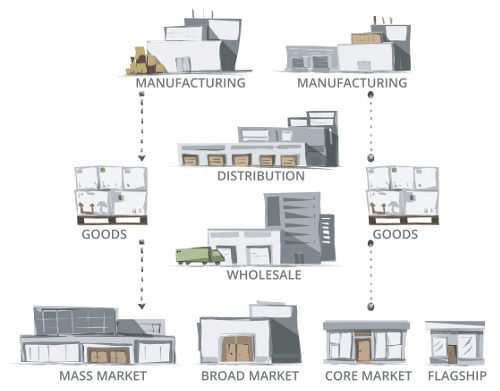
EDI compliance adds extra expenses (lots of them) in order to integrate into the retailer’s existing systems.
Large retailers like Walmart use EDI as a way to manage data; sending and receiving product availability and sales data back and forth.
That won’t work for a company like WNL who mostly operates with drop-shipping. Instead, they now just receive a notification of an order from their third party seller. They get an invoice for the order, and send the product directly to the customer.
It’s simple. Straightforward and no-frills. But incredibly efficient (and profitable).
That’s the important word here. Because protecting their margins has been one of the keys to their growth so far. Here’s why.
How to decide what marketplaces to enter
Years ago, marketing didn’t just mean advertising. Or PR or promotion, either.
(Like it does today for many companies.)
Instead, there was the Marketing Mix (or the 4P’s).
One of those P’s, if you remember back to college, was Place. Or more accurately today, distribution.
When you look up that word in this context from good old Wikipedia, you get something that looks like this:
“The process of making a product or service available for use or consumption by a consumer or business user, using direct means, or using indirect means with intermediaries.”
The point of distribution is to make products readily available to people where they might see them (through some close proximity).
WTF does that mean?
It means you go to where the customers are.
If they’re on Facebook, you to go Facebook. If they’re on Amazon, you go to Amazon. And if they’re on Craigslist, you go to Craigslist to ‘borrow’ their user base like Airbnb did in the early days.
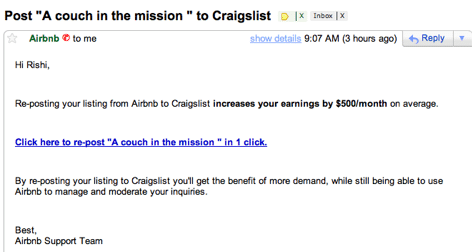


For that reason, WNL works with several different marketplaces in order to constantly be in front of potential customers.
So you can find their products, right now, through Amazon, Fancy, Touch of Modern, Wayfair, Etsy, Urban Outfitters, and Shopify.
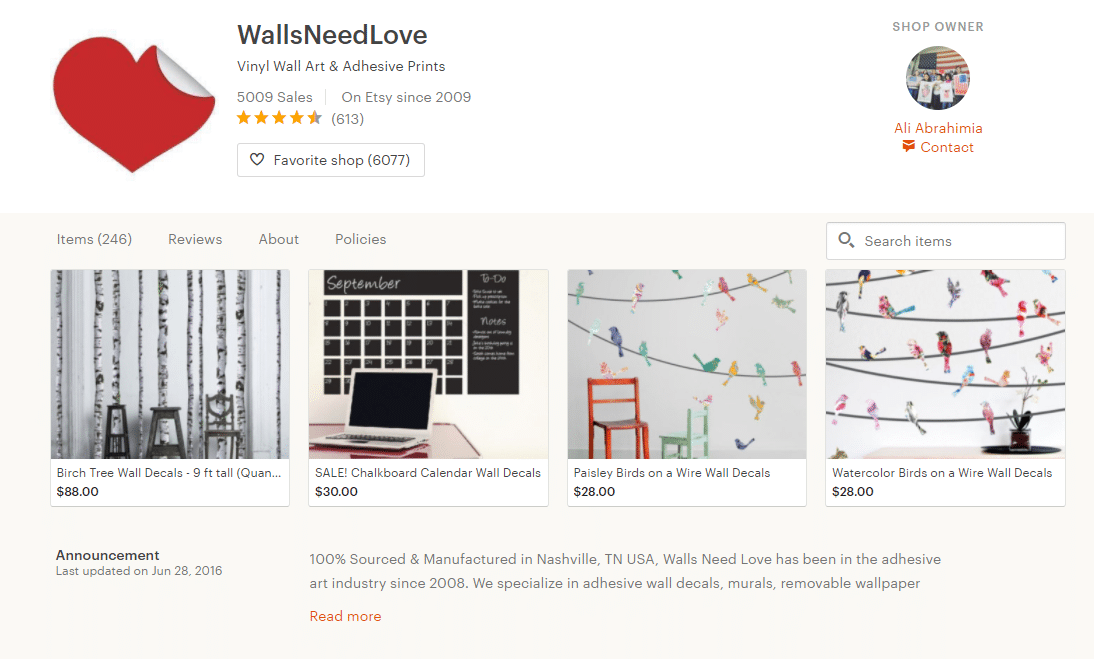


BUT. They don’t do this at any cost. They’ve got a few ground rules, first. A few checks and balances to make sure it’s going to be a win-win before entering into a distribution agreement.
One of the first considerations is margin.
WNL will analyze how much the third party requires for each sale. If they demand a high percentage of discounts, and won’t work with WNL to find an agreeable middle ground, the partnership doesn’t happen.



WNL prefers to work with marketplaces where their product can stand out and not get lost in the crowd of every other item for sale.
For this reason, WNL likes to work with third party sites that do flash sales. They get constant promotion of their product for an extended period of time.
Flash sales promote product via their own email lists and social media channels to spike exposure, and are great ways to amp sales and bring in new leads fast. That’s why even high-end brands like Louis Vuitton use them.
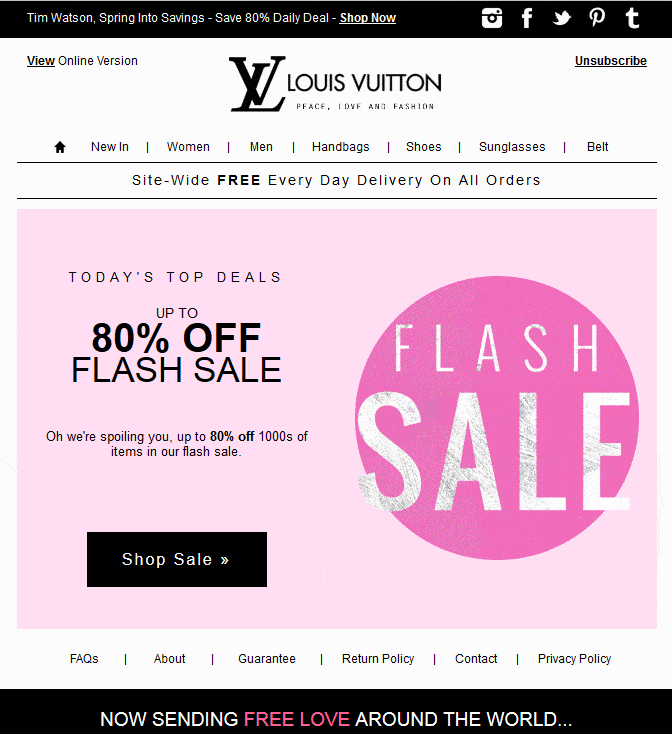


WNL will also work with certain marketplaces, like Wayfair and Fancy, who offer advertising on their site for a fee or percentage of WNL’s product sales. That way, there’s an incentive for both parties to make a long-term partnership work.
So WNL will create large spreadsheets of data to get the store up and running, and, if the store is Shopify integrated, all of WNL’s products are uploaded automatically.
They often find that marketplace’s who won’t support something like this don’t always produce a good enough ROI to make it worthwhile.
Payment considerations are one of the final hurdles WNL uses to vett a new marketplace.
Payment after 30 days (net 30) is ideal and the most common. WNL has to reinvest their revenue for growth. So they won’t do any net 60 or 90 day deals — no matter who the marketplace is.
That also allows them to fund their seemingly old school, boots-on-the-ground promotional strategy.
How to use boring, offline conferences to scale growth online
Tim Ferriss is many things.
But like him or love him, you can’t deny one single fact:
The man can network.
The roots of his success trace back to South by Southwest (SXSW) in 2007.
Keep in mind: Dude was a nobody at this time. The Four Hour Work Week wasn’t an international bestseller. In fact, it was just previously rejected 25 times by most publishers.
Fast forward a few years, and his original book has spent four years on The New York Times Bestseller list and over 1.3 million copies sold.
What happened?
Bloggers at conferences, that’s what.
Back in 2007, Tim strategically sought out every single major blogger at SXSW. He approached them, hand in hat, asking for just a few minutes of their time.
Instead of pitching, he asked for help. His aim was to build an honest-to-goodness relationship with these people.
And it apparently paid off. (Handsomely.)
WNL has taken a page out of Tim’s book.
In the early days, they would attend ‘Home and Gift’ shows in order to demonstrate their products, help people understand what they did, and how they worked.
This was the first step towards meeting and working with bloggers who do the lion’s share of their promotion now.
Today, WNL will start by sponsoring the conference. That nets them the visibility they need to collaborate with both influential bloggers and new bloggers who are looking for good content.
Depending on the blogger, WNL will either provide them product to review and promote, or pay them for the service.
At the Nashville Home Show, WNL plans to sell directly to the customer. They will also be attending a Pinterest-centered conference, at which they can do a demo of the product for customers to pin and share.
Why go to these great lengths?
Because nearly 86% of people today are banner blind. And ad blocking technology is on the rise.
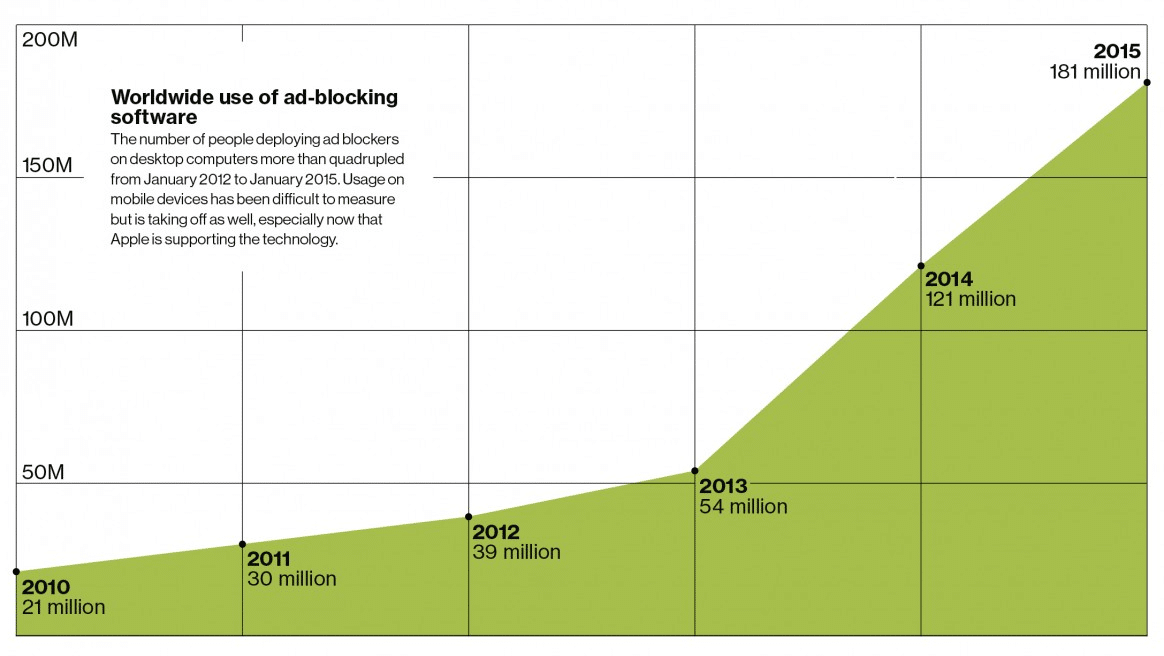


So that’s not how new people are discovering brands today. Instead, they’re turning towards peer reviews and influencers they follow.
Case in point: 92% of people trust reviews from random individuals more than from the brand themselves.
Influencer marketing delivers a 11x higher ROI according to another Nielsen study.
Want to start meeting bloggers at conferences?
Counterintuitively, you gotta start before you get there. Gaetano from Sales Hacker says, “The absolute WORST thing you can do as a conference attendee is just show up.”
In other words, you need to create a shortlist of your top potential targets and start reaching out ahead of time. That way you’re on their radar. And you’re a ‘known quantity’ before eventually meeting them at the event.
Otherwise, you already know how effective it is when some random walks up to you, completely ‘cold’ without an introduction, and hands you their business card. It ends up with all the others in the trash.
People in general are becoming less patient with these irrelevant, spray-and-pray tactics. For example, one study shows how people react when you spam them:
- 80% will block your phone number
- 84% will close their account or unsubscribe from email list
- 82% will delete apps because of push notifications
- And another 86% said they’d unfollow brands on social channels
Now compare that to what happens when you make even a little effort to personalize your approach.
86% of consumers say that it influences them to buy. That means results almost swing completely in the other direction; Transforming the ~80% who were going to block you into now being interested to buy.
And that’s why a third of marketers are trying to prioritize personalization techniques.
Reaching out ahead of time gives you a ‘warm’ introduction when the time comes. It gives you a foot in the door that changes a blogger’s reaction from, “Why are you bugging me?” to “Oh, it’s so nice to meet you!”.
So here’s how Gaetano would recommend reaching out, instead:
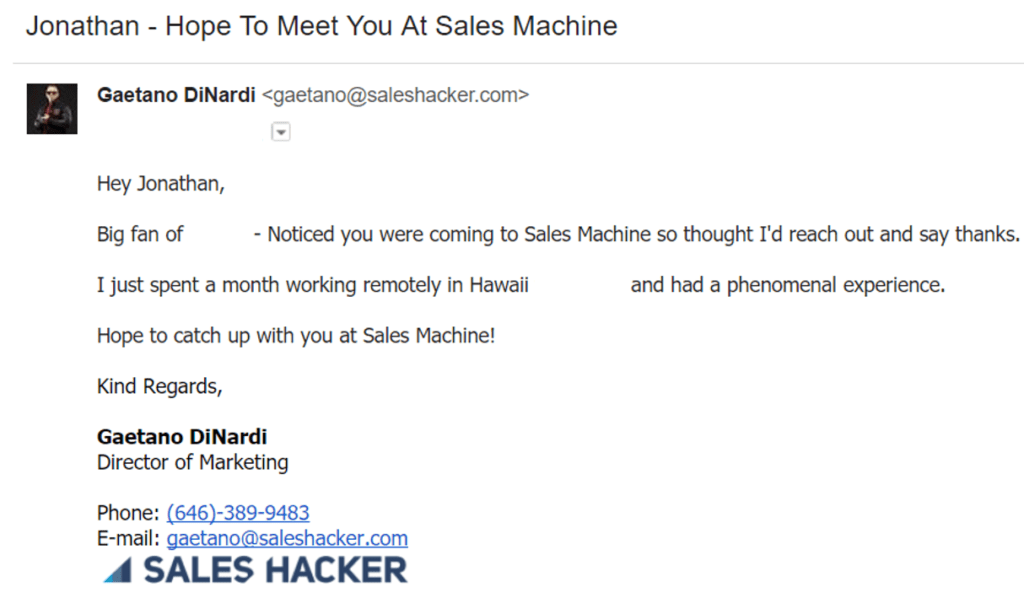


Gaetano recommends three lists of people:
- Segment A: The cream of the crop. Go above and beyond to get on their radar.
- Segment B: These are your peers with similar job titles and responsibilities.
- Segment C: Last but not least, the potential leads you can grab face-time with.



Cool.
How, exactly, are you supposed to find these people?
One of my favorite techniques is to follow the hashtags for upcoming events. You’ll get a rough idea who’s attending, and where the after hours fun is to be had.
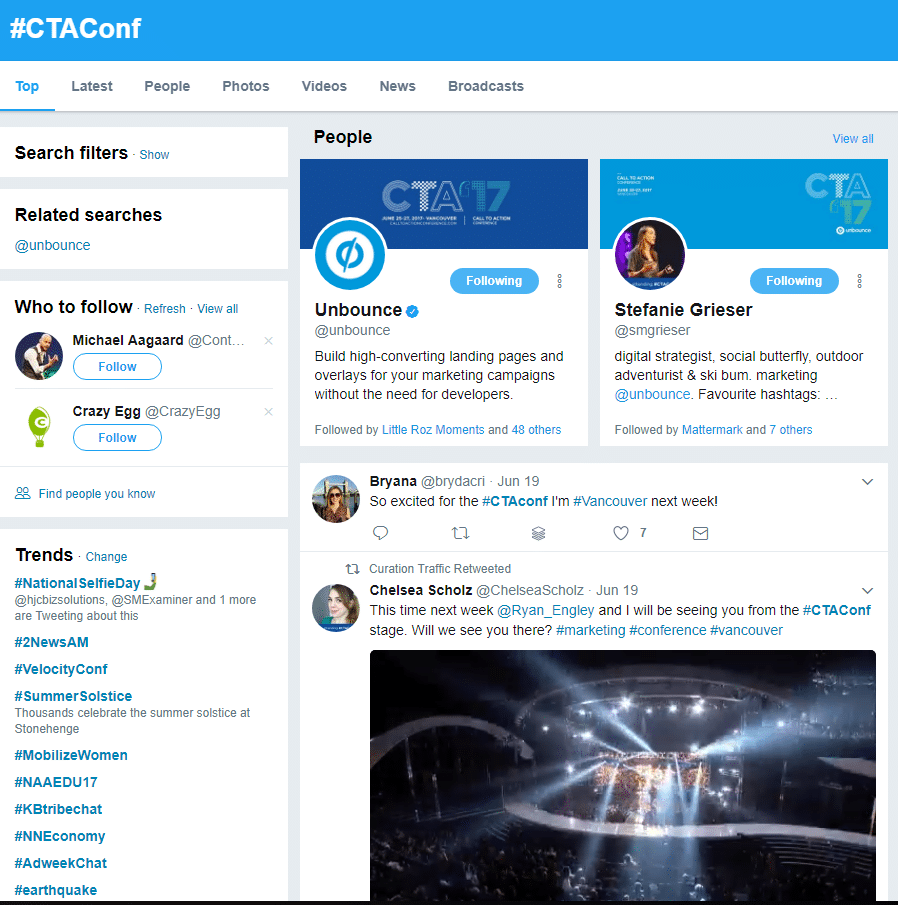


Take these people using the hashtag and add them to your C list for now:
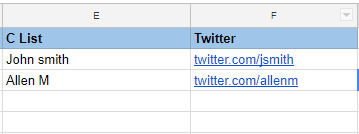


A tool like Followerwonk (which is like Google Analytics for Twitter) can help you take this creeping to the next level. You can look up individual people or see how a cross-section of related attendees look by stats like follower counts, social authority, and more.
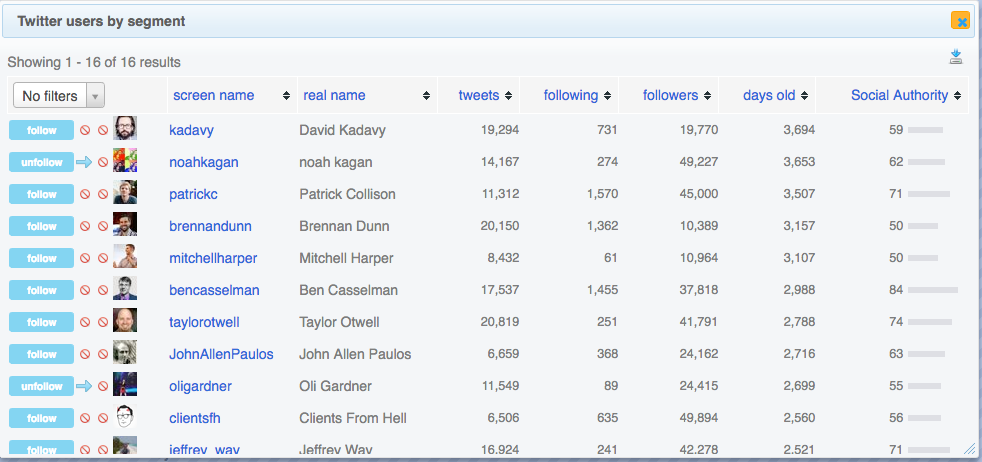


WNL won’t just work with any blogger, though.
Again, they run each through a careful checklist to make sure their investment (including both money and time) is worth it.
When you find influencers with a similar style, upgrade them to section A or B on your list for top tier efforts:



For example, the conference must have an aesthetic that matches the WNL brand, and the attending bloggers should also have a similar aesthetic on their site.
Price is also a big consideration, as is the overall history and success of the conference.
WNL recently started an affiliate program to work with bloggers to help manage the massive time commitment that working with bloggers typically requires.
Bloggers in the program blog on content given to them by WNL, or will use their social media platforms for additional posts.
While WNL continues to handle all the backend sales and logistics with the customers, the blogger then receives payment for meeting the agreed-upon goals of the affiliate campaign.
WNL recently capitalized on its blogger relationships by working with three bloggers on a room refresh project. Each blogger had to recreate a room in their house using less than $500 of WNL’s product.
The rooms came out as three wildly different interpretations of the product because of each blogger’s different style and preferences.
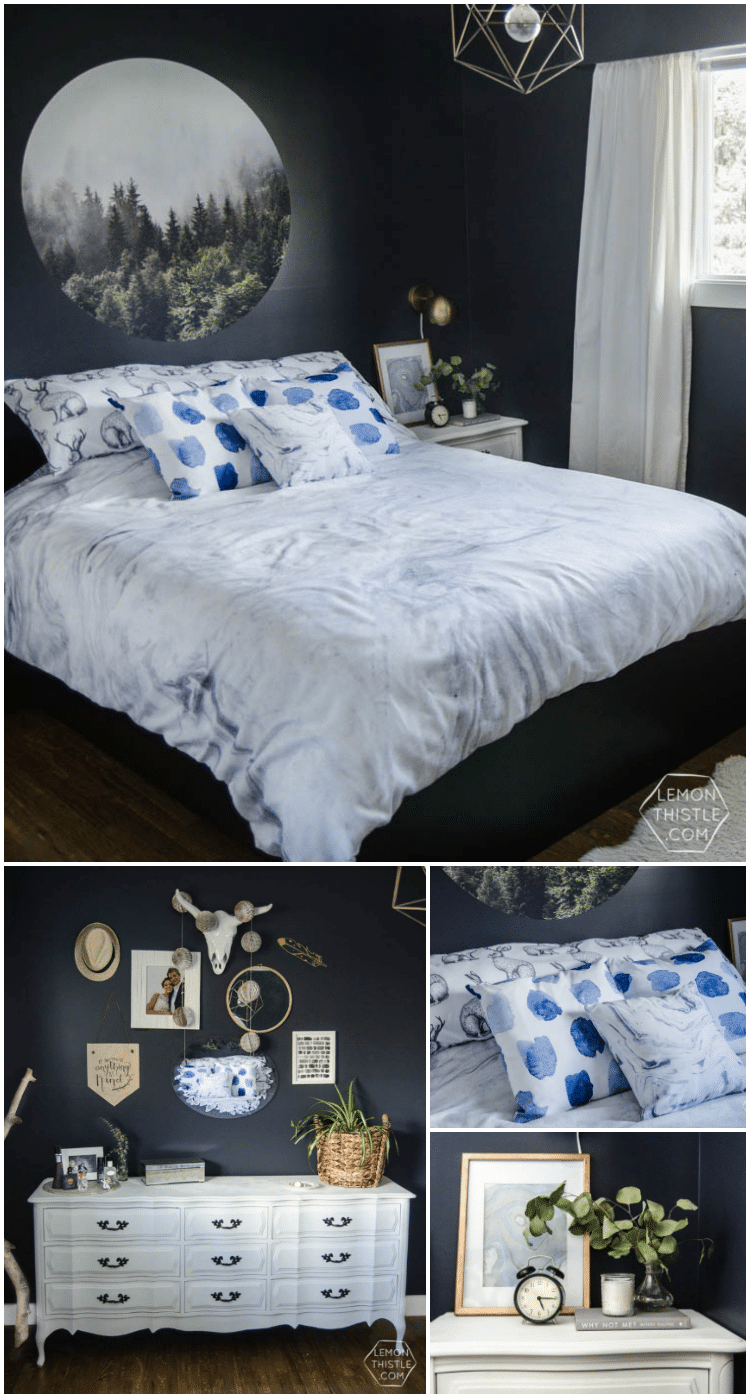


Campaigns like these help elevate the blogger to industry celeb status. So WNL will host interviews with them as a way to “meet the blogger” and offer their customers an ‘inside look’ at what their design process, style, and lives.
These brand partnerships with bloggers also open up the opportunity for a treasure trove of new media and images for the products.
Good photography ain’t easy. But these bloggers often specialize in it.
So WNL is able to use the blogger’s photos in their own marketing and advertising, bypassing the difficulties and expense of photographing all of their products. Bloggers interpret the designs for use in their own ways, giving WNL quality content to share in promoted pins or Facebook and Instagram ads.
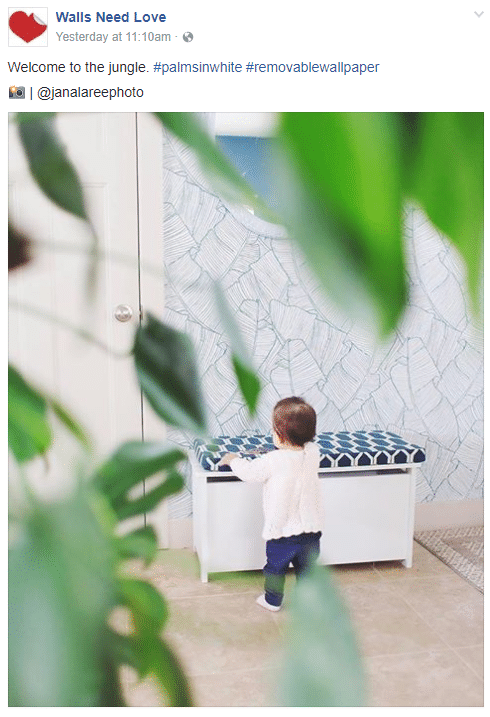


WNL uses these blogger partnerships to increase traffic to their site, and will also sponsor ads and paids posts on the blogs.
Why’s that important?
Because blogger’s photos + paid distribution is the key to their massive social performance.
How to use an organic-to-paid strategy to dominate Pinterest marketing
While WNL’s blogging partners are busy providing high-quality images, the team at WNL is using analytics to determine which ones are performing best with their social platforms (including their 18,000+ Pinterest followers).
For example, they recently discovered that “light and airy pictures” get the most likes on Instagram.
The point is to identify the ‘top performers’ with some basic organic promotion. So they test pins to see what performs, and try to post based on the changing Pinterest algorithms.
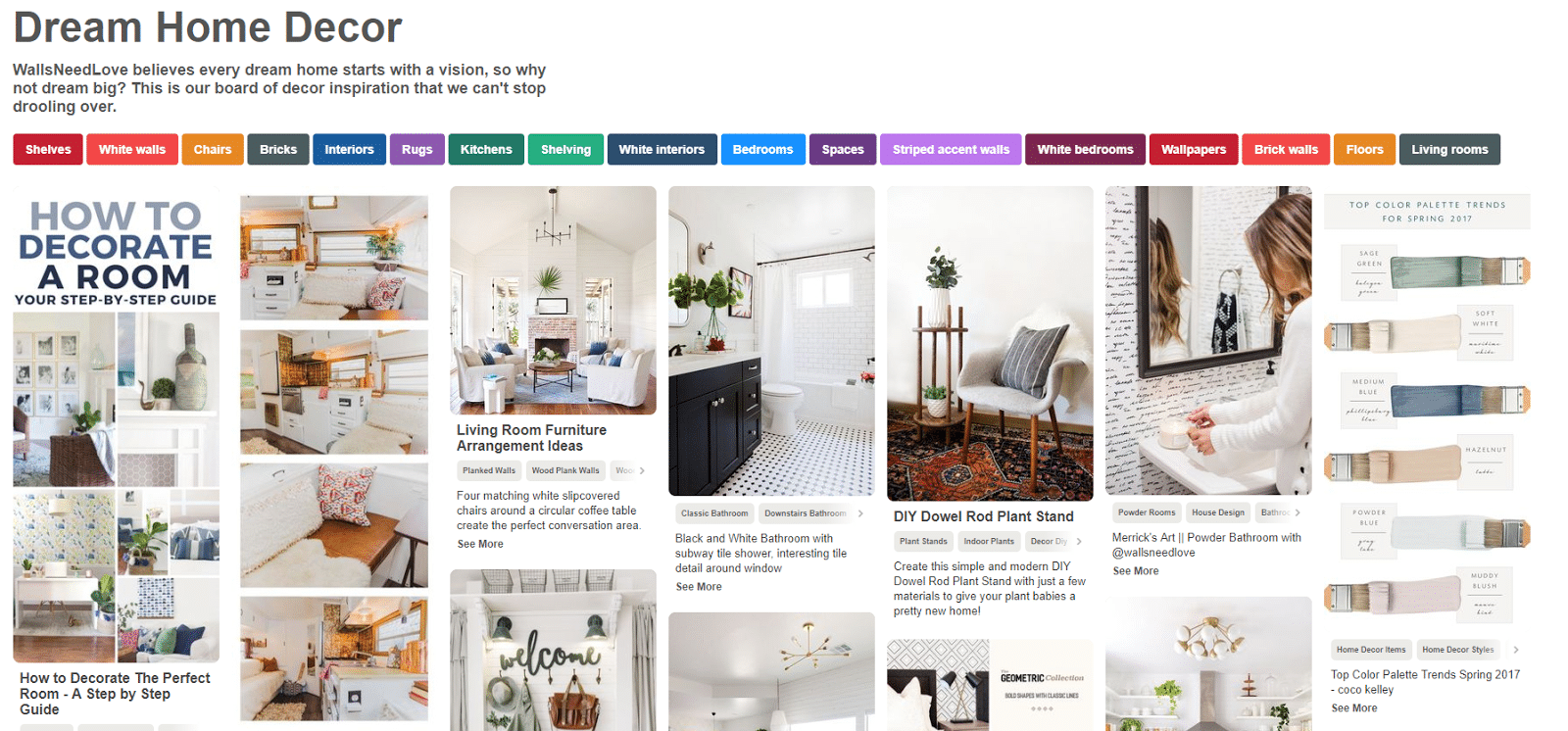


And then double down on that success with paid promotion like Promoted Pins, which link back to their site. OR even better, Buyable Pins so that Pinterest users can buy direct from their site.
This heavy paid distribution also gives them one very valuable side benefit: analytics.
The fact that Pinterest accounts for 94% of their social traffic is… fine. Sounds good on the blog post headline, right?!
But more importantly, investing in paid media on their platform allows WNL to more easily track results back to the individual channel.
Here’s how you can do the same.
Step #1: Your first option is the standard, Promoted Pin used to drive traffic or engagement.
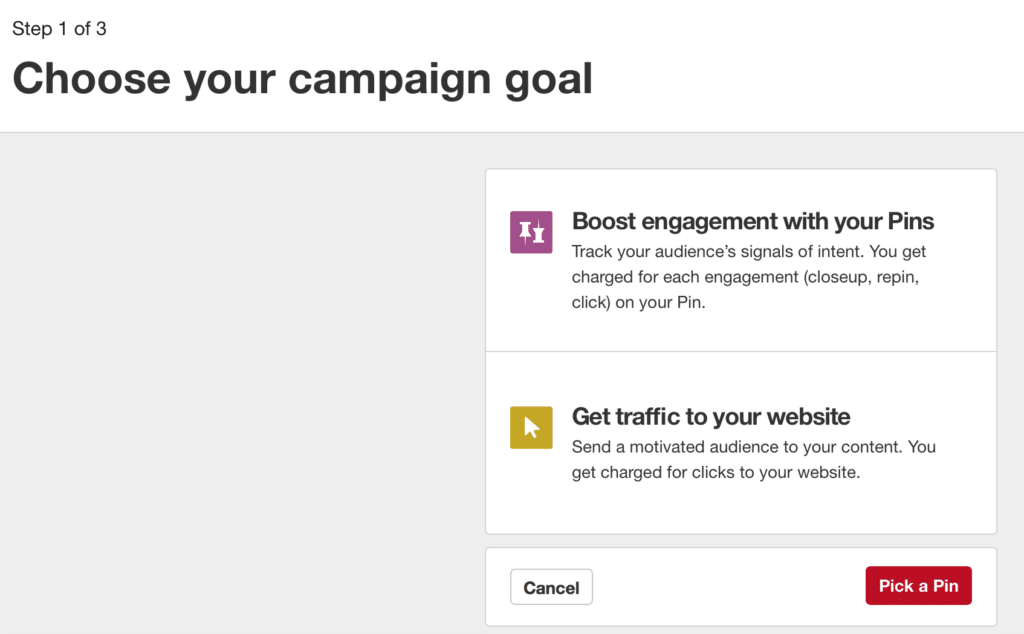


Key tip: When you start and you have no data or experience on Pinterst, you can simply mimic top performing pins your competitors or related Pinners in your industry post.
For example, Walls Need Love already identified that “light and airy” work best in their niche. If you’re moving into a new space, you can easily benchmark off other big competitors who’ve probably already done the hard work for you and figured this out.
Then start small in the beginning, especially if you don’t have a history of successfully advertising.
What you don’t want to do is ‘pull the plug’ too early, before campaigns have had a chance to deliver. And you’re going to need to let them run for at least a few days to a few weeks in order to see anything promising.
For example, let’s say you want to sell one product. Let’s see how much it’s going to take to generate that sale.
If you don’t already have a conversion rate, you can just use the standard industry benchmark (in the 1-3% range for eCommerce).
That means you’re going to need roughly 97-99 website visits to get a single sale. Awesome. Now we’re getting somewhere. If each visit or click costs a dollar, you’re now looking at around ~$100 bucks to spend to get anywhere close to a single product sale.
In reality, you’ll probably have to spend more than that in order to see results average out over time (if you’re shooting for a statistically significant result).
The point is to be realistic with your objectives (especially if you are trying to sell products ASAP after someone clicks through).
Step #2: After selecting the main objective, you can next pick the Pins you’d like to promote.
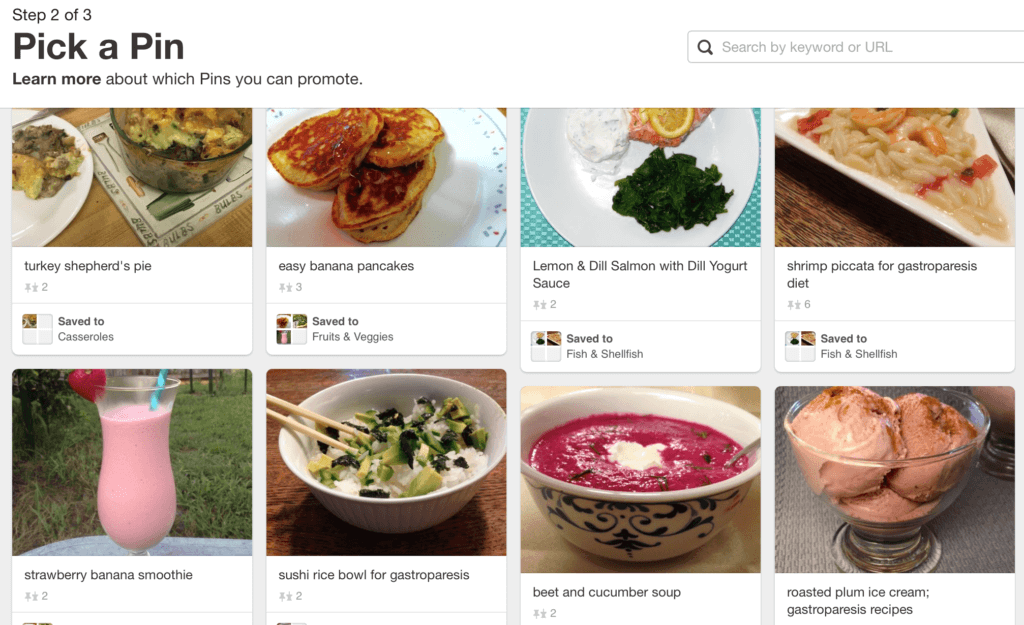


Key tip: According to co-founder Patrick, the key thing that got Pinterest to work is to first spend the time to patiently build out an organic following. That way, you have an early audience to test each of your pins with.
Then afterwards you can quickly identify the top performers (based on the objective — traffic vs. engagement) to promote.
This is especially helpful when you don’t have a big budget to dump into marketing.
Another side effect is that the “Pinners” trust and loves organic posts more than the promoted posts. Kind of like how users trust Google organic results more than Google Ads even though Google Ads are on top of the SERP.
For example, Pinterest’s analytics will help you figure out the little nuances of what works best, and when.
You’ll be able to quickly look at engagement data on each picture to spot patterns. And you’ll even be able to view results by Day of the Week or Time of Day to capitalize on when people are going to be most active.
Step #3: Promoted Pin targeting comes down selecting the appropriate interests and keyphrases that match your prospective customer’s preferences. (Exactly like you’d target new audiences on both Twitter and Facebook, too.)
So you can start with a few major ‘keyphrases’ that are relatively generic (like “chilled soup”). Before adding new variations on that (like “cabbage” or “potato” soup).
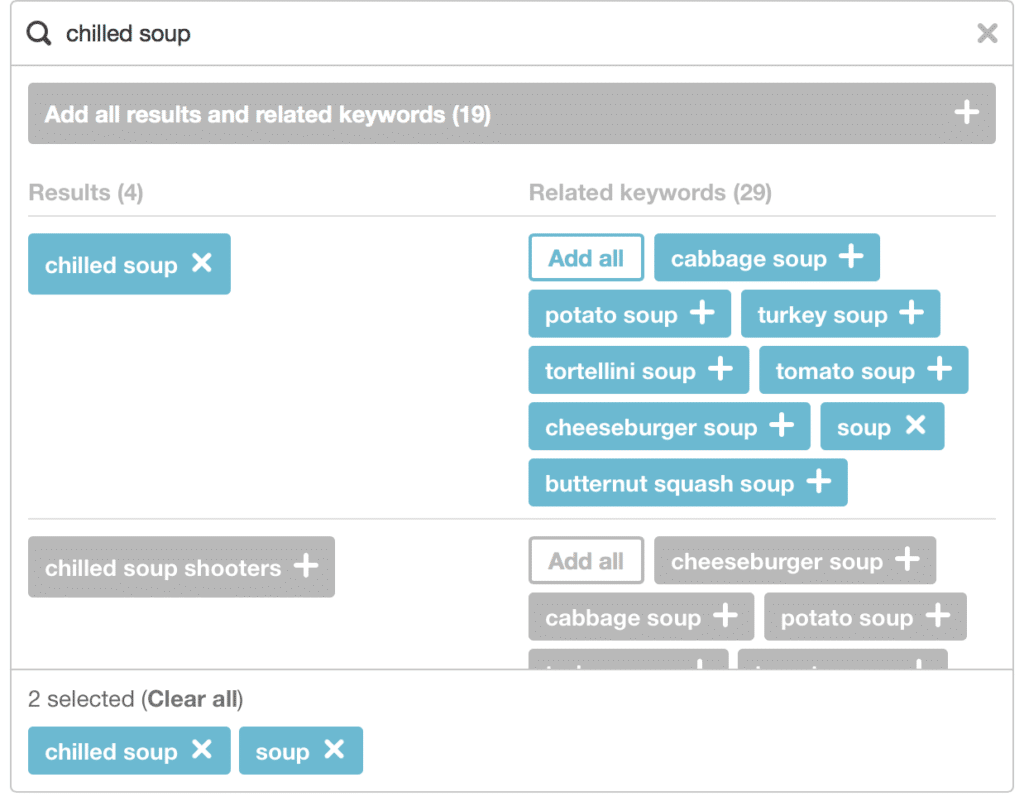


This is no different than long-tail keyword research when you think about it. Your goal is to figure out what else people might be interested in or searching for that’s related to what you do.
Step #4: After selecting a handful of keyphrases (Pinterest themselves recommend at least ~20), you can further narrow down your list with demographic data like location, gender, device, etc.
The trick is to think about the related problems or reasons someone might be looking for that specific thing. For example, you might sell a “drill” but the greater public will instead be interested in “home renovation projects”, “new kitchen cabinets”, etc.
Step #5: You might be able to generate Promote Pin clicks for as little ast $0.50 each depending on your targeting. But Buyable Pins will help you directly generate revenue, instead.
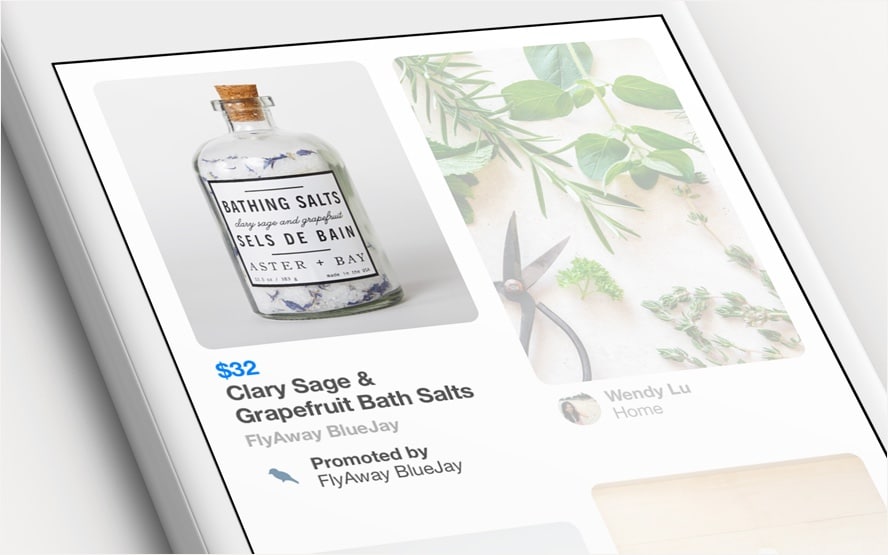


Most social platforms force you to send people to your site, first, in order to nail a conversions. Exceptions include Facebook’s Lead ads, but even those only work for opt-ins and not product sales.
Pinterest is different though, by giving brands the ability to generate products sales directly on their ad platform.
Each Buyable Pin features a CTA (e.g. “Buy It”) that will show up next to the customary “Pin It” button. The price is transparent. And the entire checkout process happens on their site. (Perfect for mobile users who can’t or won’t enter a lengthy transaction process on their small screen.)
Best of all, Buyable Pins already integrate with leading providers like BigCommerce, Salesforce, and Shopify. So creating this integration between ad platform and shopping cart is as simple as a few clicks.
Step #6: WNL then uses analytics to identify which campaigns are performing best, which blogger’s content is performing best, and iterating to scale growth through the roof.



[BONUS] Pinterest Strategy
I’m going to give you another bonus strategy to help you target the exact audiences that will most likely convert.
Competing with Facebook’s advertising platform, Pinterest also duplicated the most effective Facebook Ads targeting feature to their ad platform.
Customer list targeting: Like Facebook Ads this allows you to target existing customers by uploading their emails or mobile ad IDs.
So… why the hell would you target existing customers?!
It’s much easier and cost effective to get an existing customer to purchase more from you than acquiring a new customer.
This way you can easily promote cross sell and up sell more products to the people who already bought from you and extent your customer’s life time value.
Here is how you do it on Shopify.
First, export your customers from your Shopify store.
Goto Shopify admin and click Customers on the side bar.
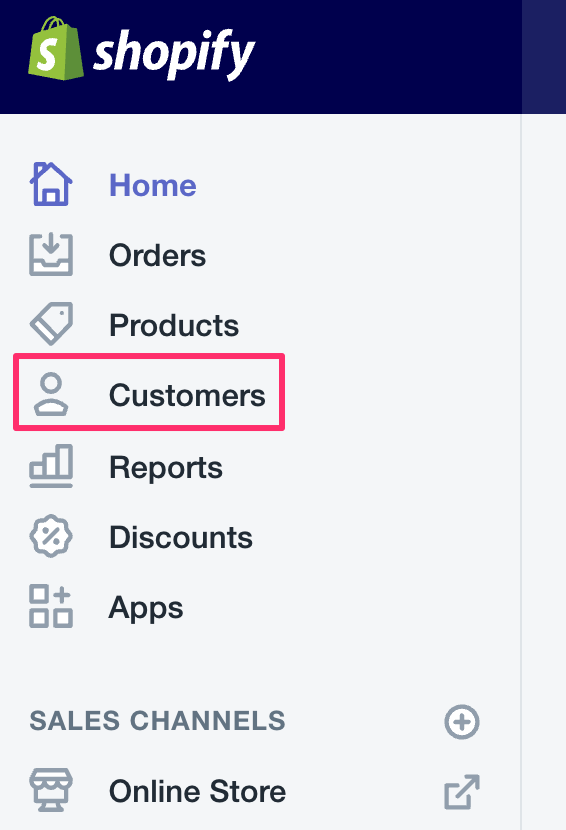


Then Click Export:



Choose the following options:
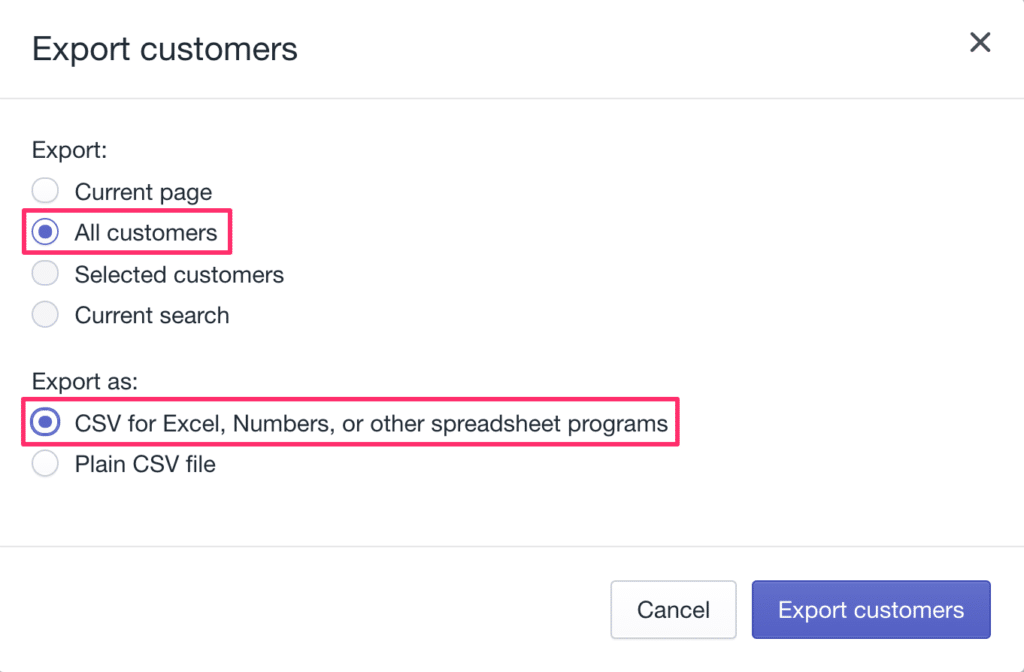


Click Export customers to download your customer CSV:
Here is are tutorials on exporting your customers if you are using BigCommerce or WooCommerce.
Next, upload the audience to your Pinterest existing audience targeting:
Edit the .CSV file and remove everything except for the customer emails.
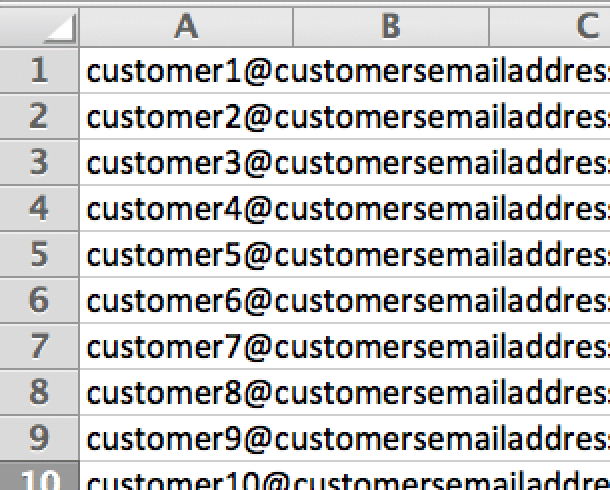


Edit the .CSV file and remove everything except for the customer emails.
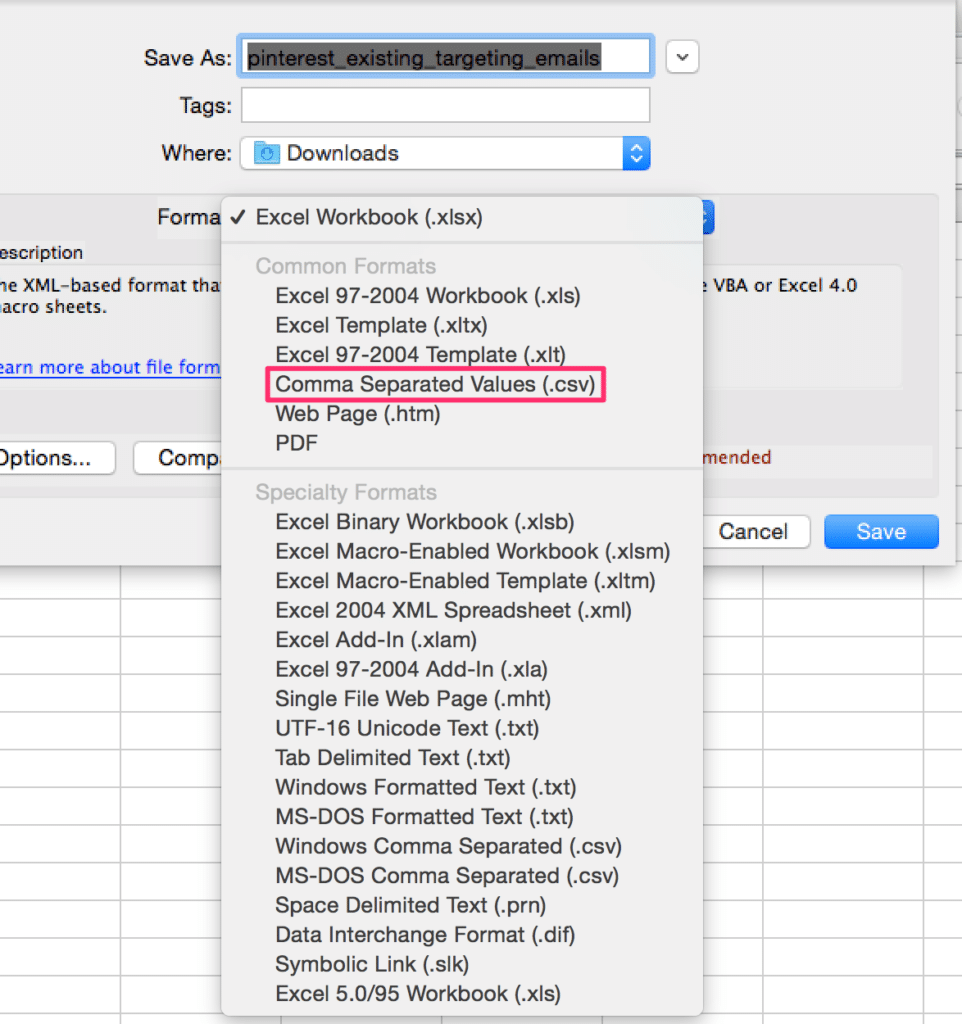


Make sure you save it as a .CSV file.



Then create Pinterest customer list audience upload your customer emails.
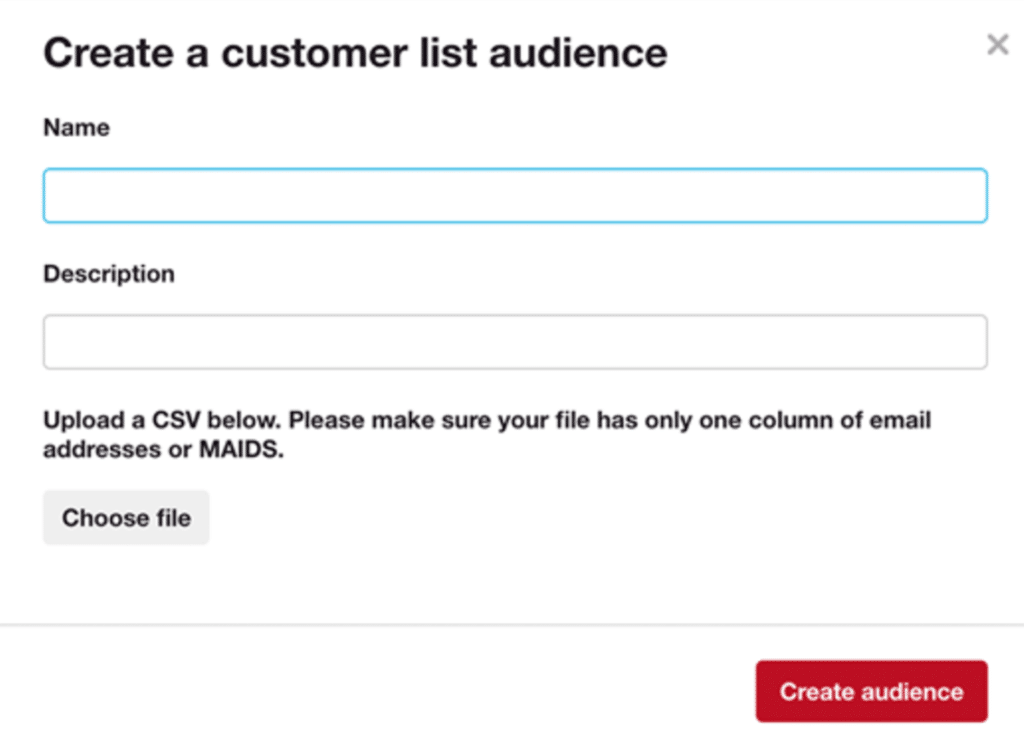


Before you can actually start marketing, you need a minimum of 100 emails. On top of that everyone on your customer list necessarily use Pinterest nor have a Pinterest account.
So you can squeeze more revenue out of this targeting method if you have a hefty customer list already.
Visitor retargeting: This targeting option allows you to market to people who’ve visited your site, so the people who see these promoted Pins are more likely to convert because they already know your brand.
After all… it takes an average of 7 touch points with a brand before a person makes a purchase from that brand.
Here is how you setup retargeting on Pinterest.
To take advantage of visitor retargeting, you will first have to set up the Pinterest conversion tag on your site. This snippet of JavaScript code will help you to track conversions, as well as allow you to build and optimise audiences in order to reach valuable, new customers.
Actalike targeting (formally known as ‘lookalike’ targeting): You accurately target NEW people who look and act similar to your audience.
According to Pinterest, brands using act a like targeting increased their click-through rates by as much as 63% and boosted reach by up to 30X. So this is a great way to scale your Pinterest marketing.
In order to use this targeting option, you must already have a target audience setup
- Customer list – This targeting option is great way to directly promote your products and convert new customer because Pinterest will distribute your ads to Pinterest viewers who have the behavior and demographic as people who already purchased from you.
- If you haven’t already, you can access this if you already setup Customer list targeting following the instructions above.
- Visitor audience – This option is good for promoting content to a people who are interested in your content, since the Pinterest targeting algorithm targets people who look and act similar to your visitor audience.
- You can set this up by confirming your website in your Account Settings. You can make even make your targeting very specific by setting up filters on which pins they engaged with and how they engaged with the pin.
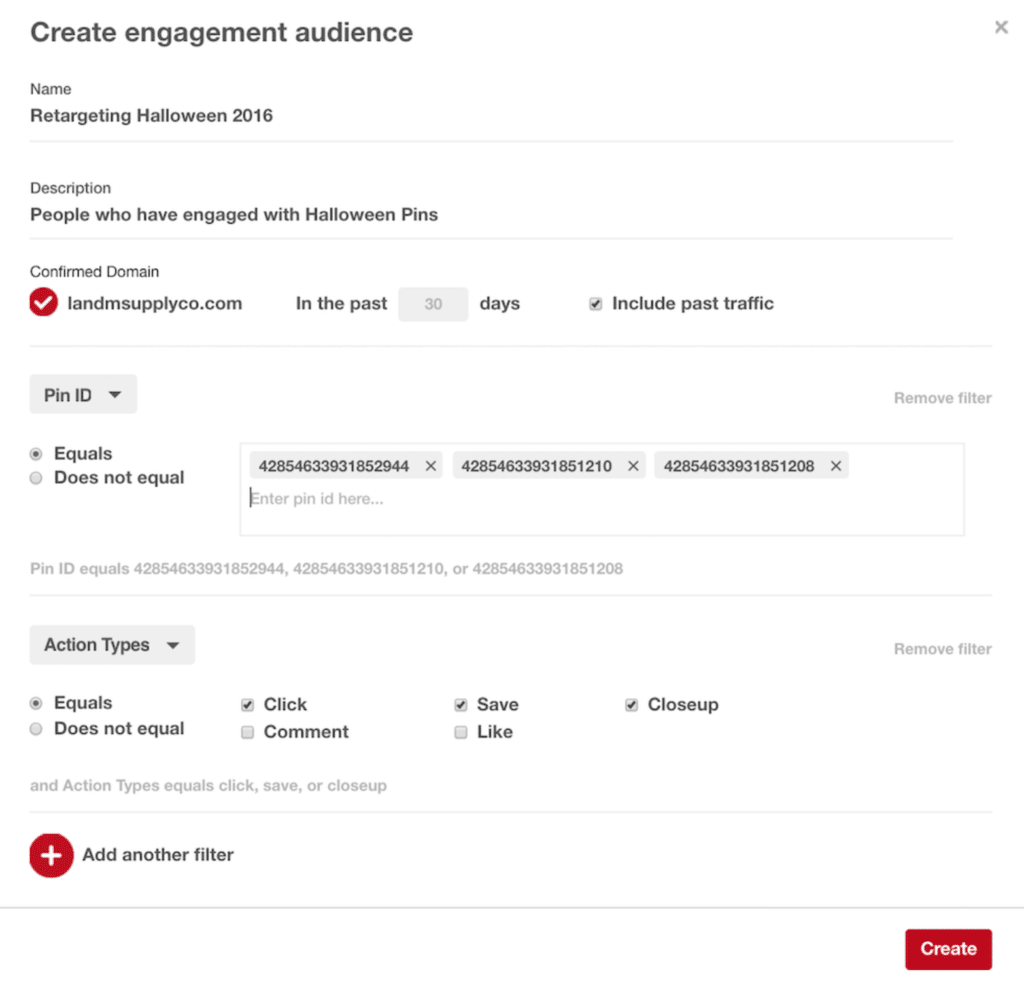


To set up your audience, you just need to give it a name and brief description, choose your source audience (that you’ve already set up) and choose your target size percentage.
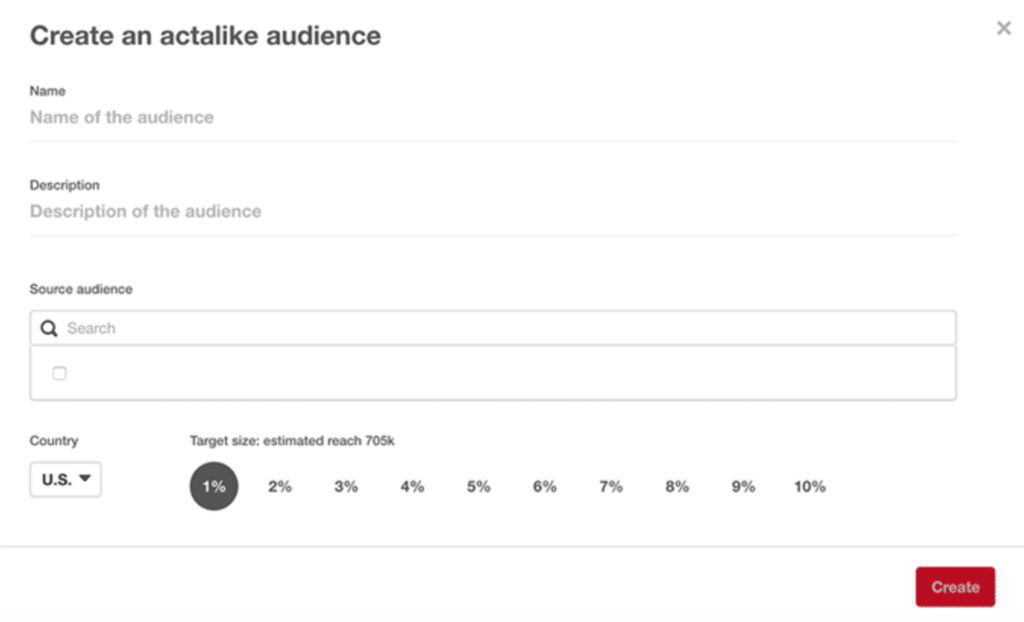


Wrapping Up…
Contrary to popular belief, you don’t have to work with the Walmarts of the world to make it big.
Smaller marketplaces that put you closest to online customers means more buyers (as opposed to shoppers). Many times these marketplaces will also help make sure your products are always front-and-center.
Don’t be afraid to dust off seemingly old-school tactics like sponsoring conferences in order to Tim Ferriss your way into the hearts and minds of bloggers everywhere. Affiliate programs and paid services will help you get bloggers’ attention.
And in return, you’ll get access to amazing content and extra eyeballs to add fuel to your promotion fire. Then you can test which content is working, and double down with paid distribution to scale awareness in addition to new sales.
What do you think?
Now you’ve seen how one ecommerce company is killing it with ‘outdated’ tactics. It’s proof that you don’t necessarily need to sign a big account like Walmart to hit it big.
Have you tried sponsoring conferences and leverage Pinterest for your products? Or know of a better way to work with bloggers?
More importantly, does this post help you implement effective strategies for your online store?
I’d love to hear about what you think in the comments below.
Share what’s worked for you, what hasn’t worked, what we can do to make this more actionable, or any other question below.
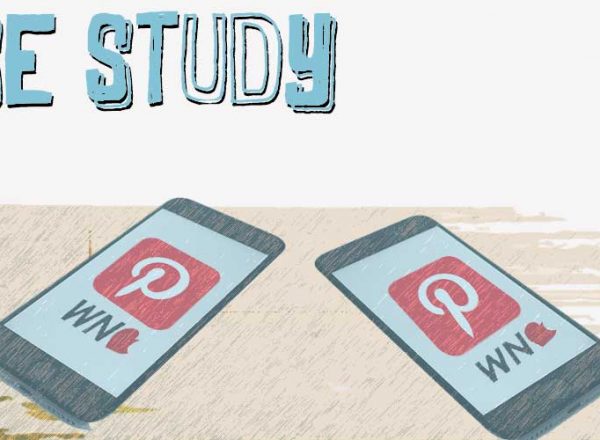
Comments